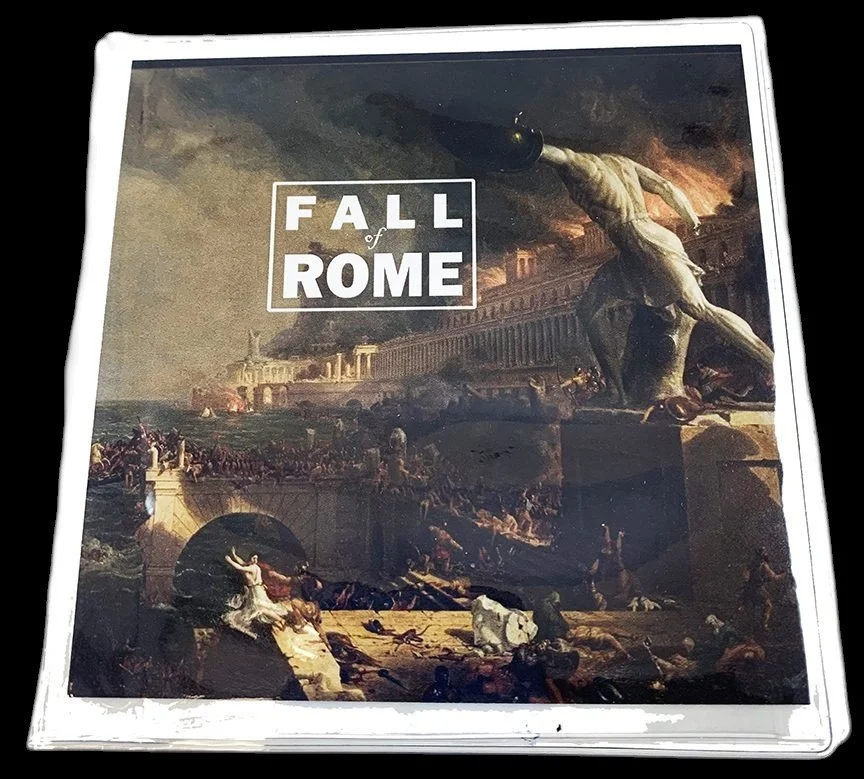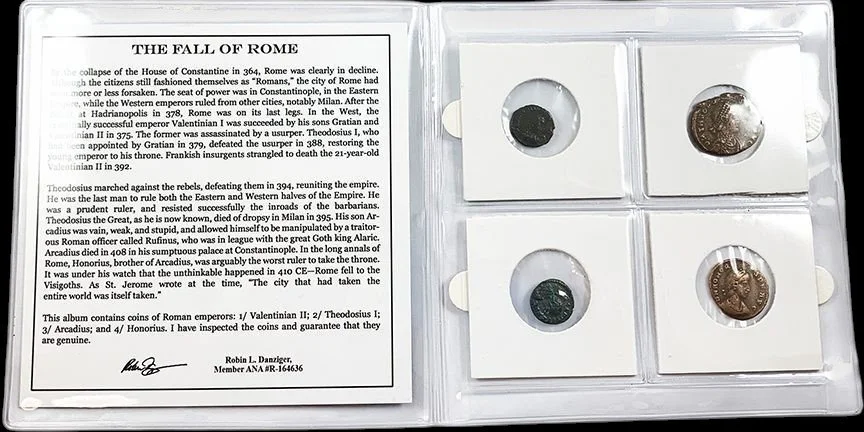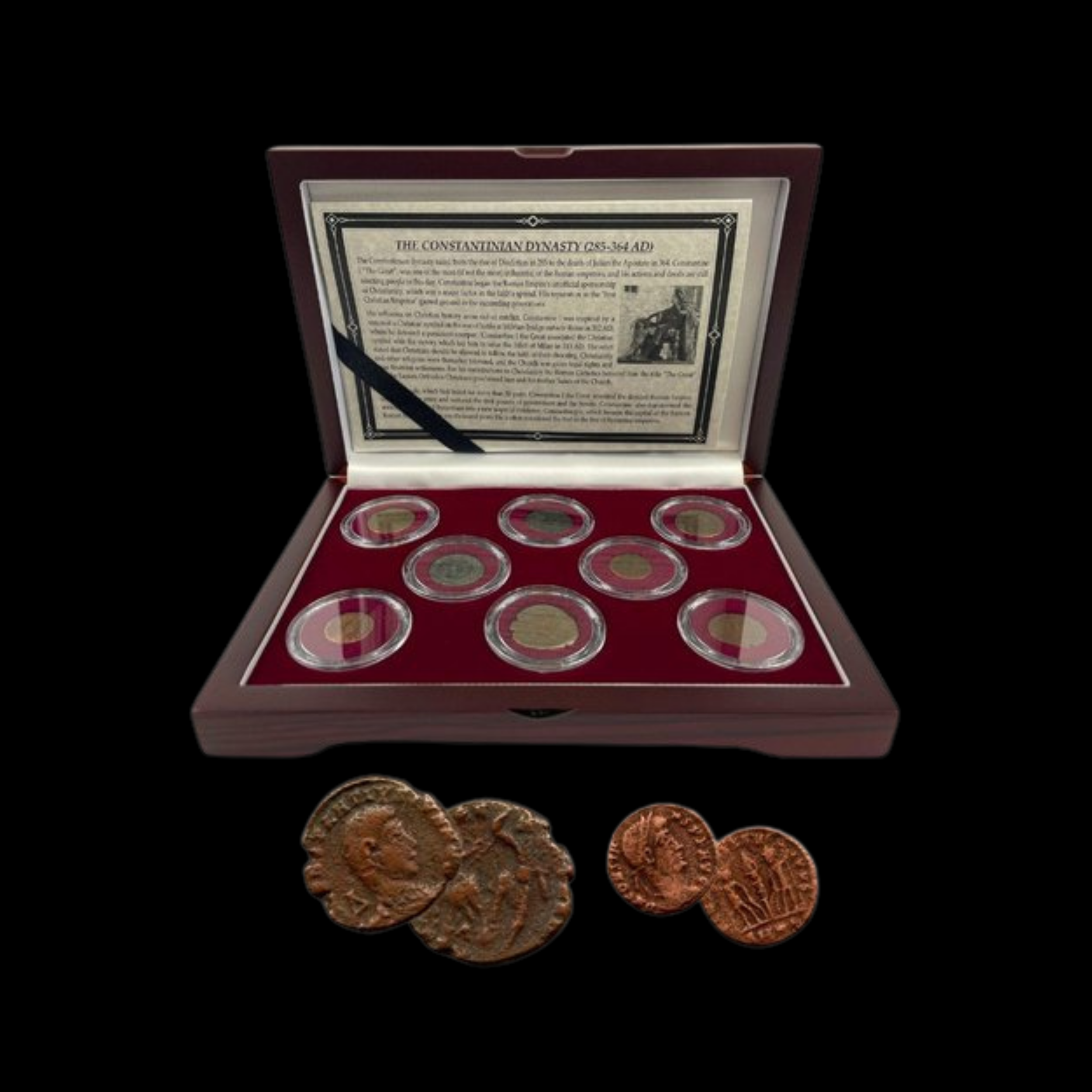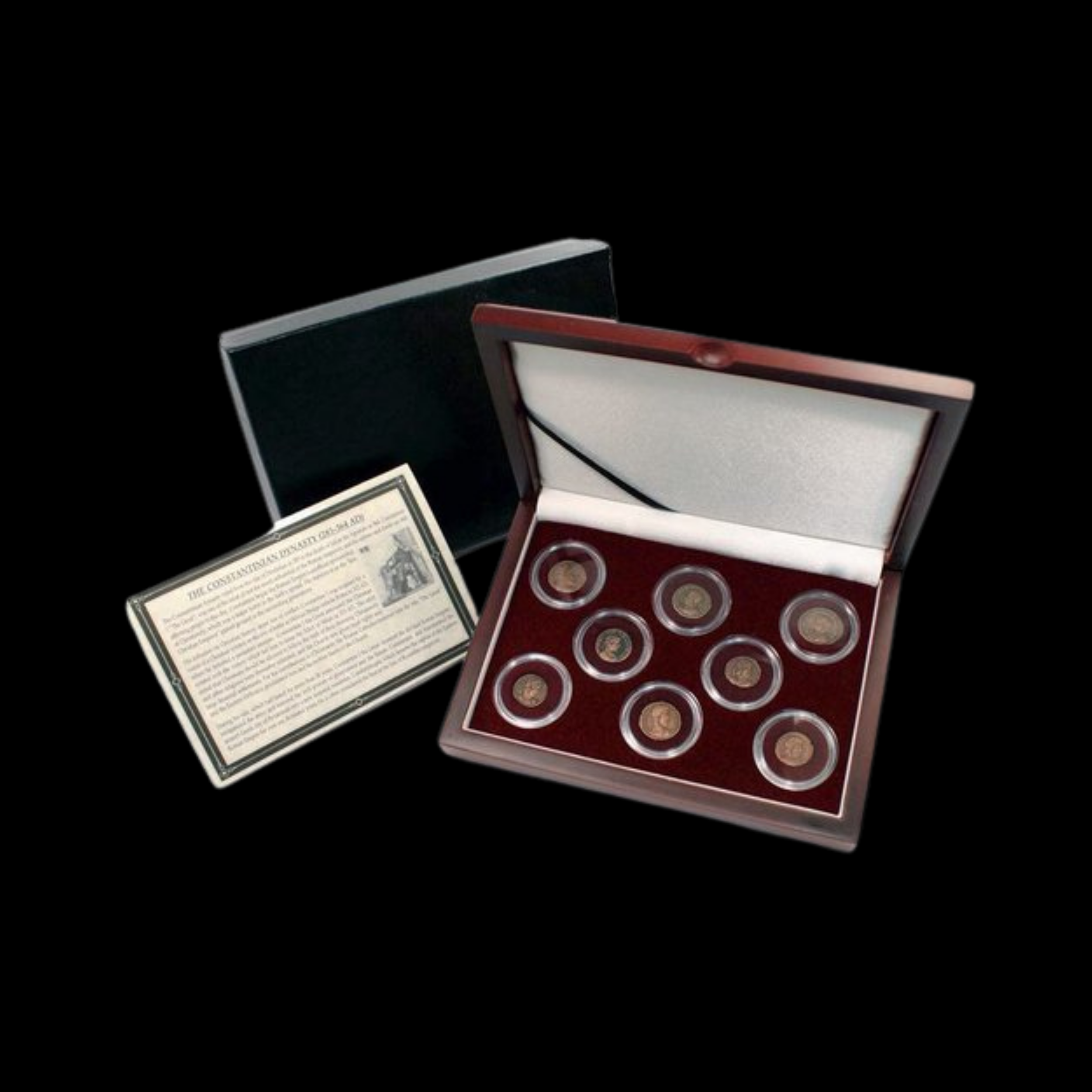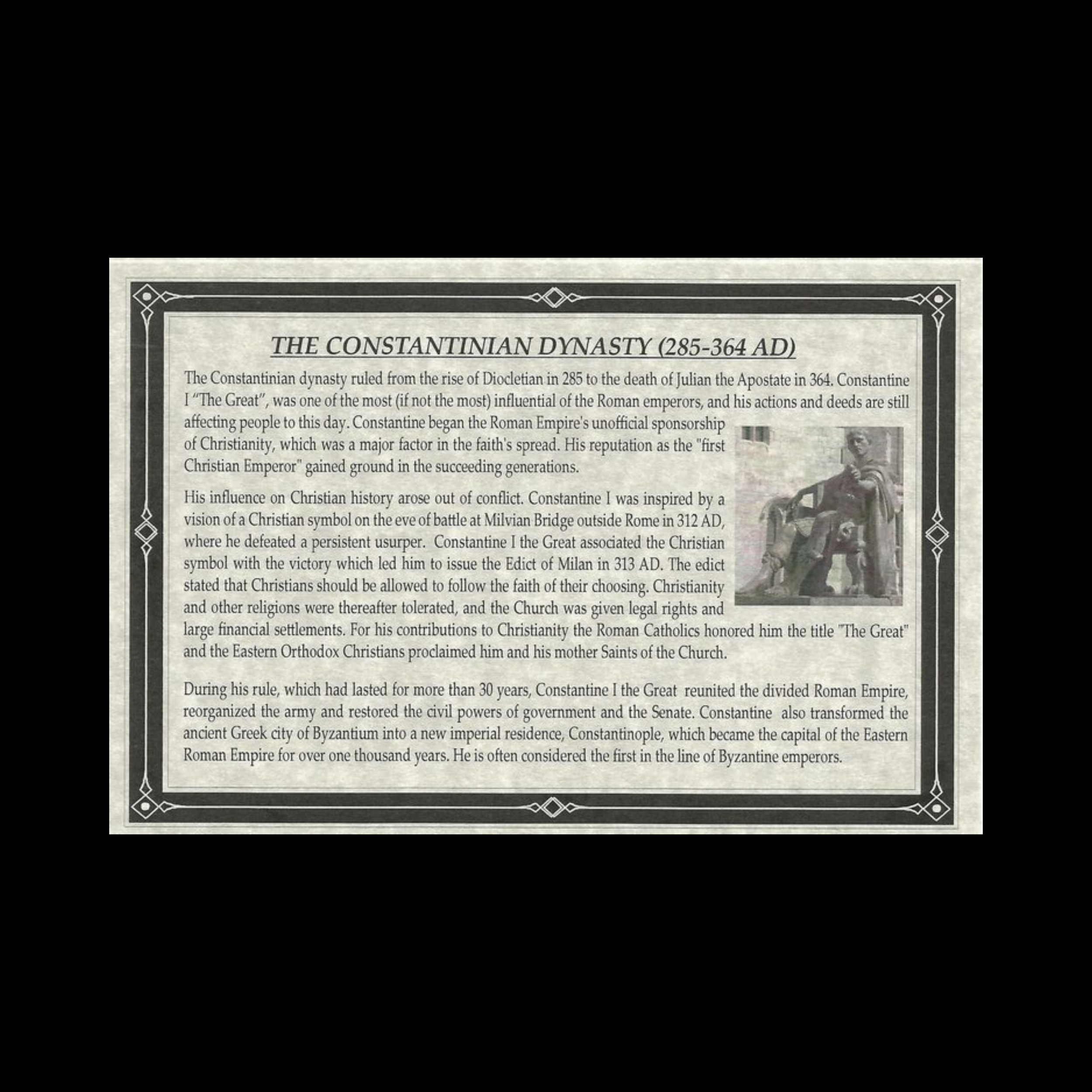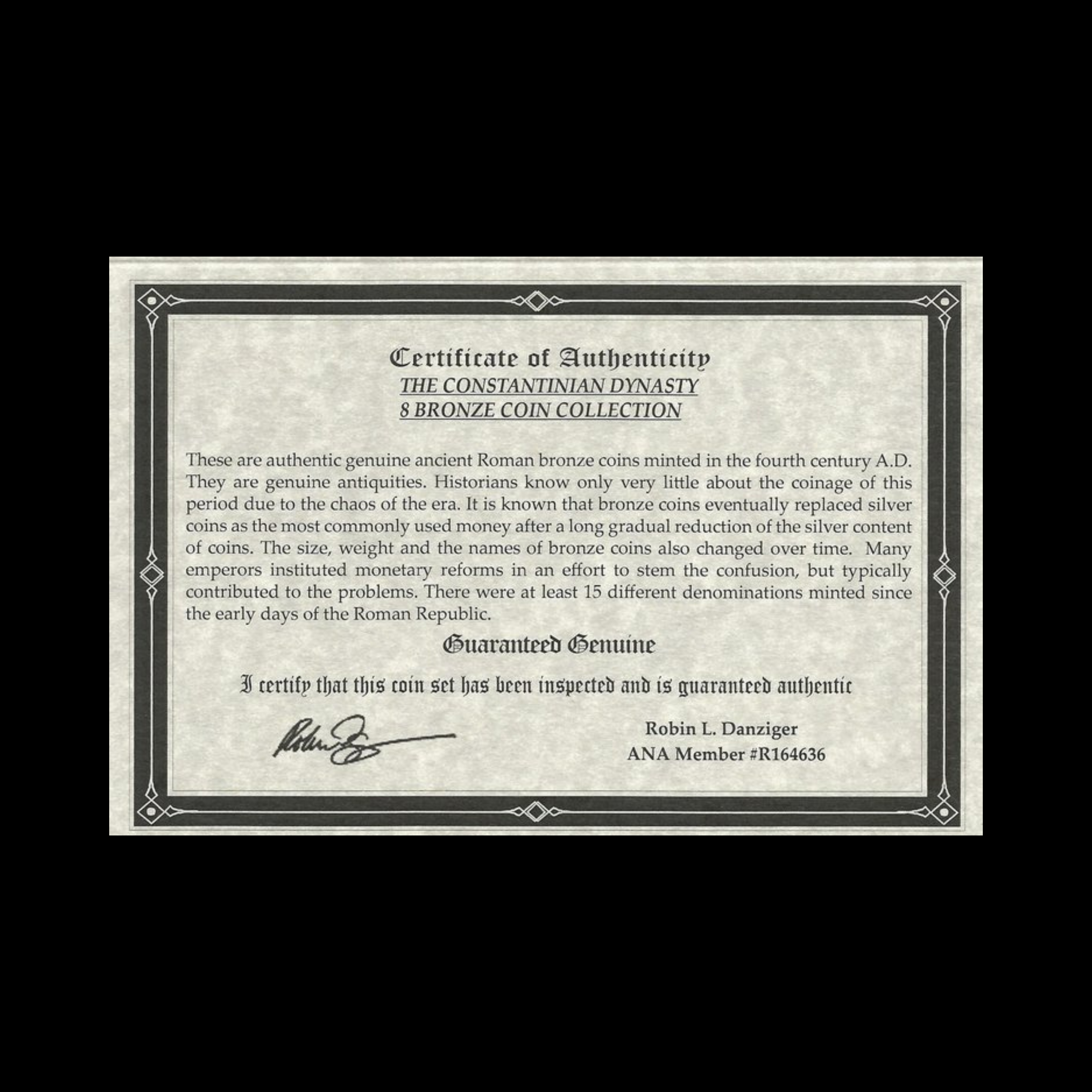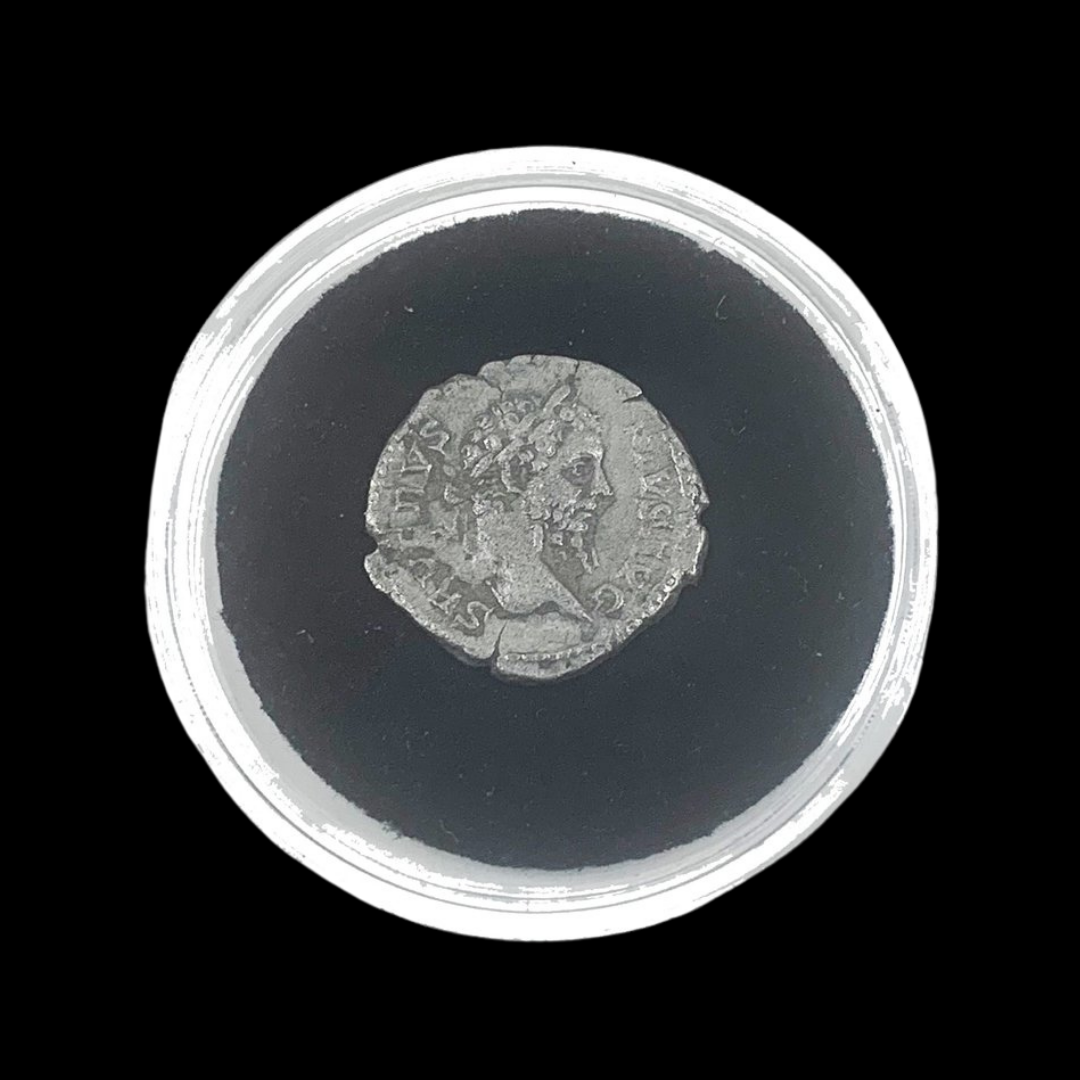 Image 1 of 1
Image 1 of 1


Constantine I: Ghost Emperor - Posthumous Coin Collection (about 1680 years ago)
Constantine the Great – The “Ghost Emperor” Posthumous Coins
This album features genuine posthumous bronze coins of Constantine I “the Great”, issued after his death in AD 337 by his sons, who sought to secure their rule through the enduring power of his image.
Technical Details:
Format: Album
Historical Significance:
When Constantine the Great died in 337 AD, his sons—Constantine II, Constans, and Constantius II—continued to invoke his authority by issuing coins in his name. These remarkable pieces depict the emperor with a veiled, spectral portrait, a deliberate signal of his death and deification.
Such imagery served both political and spiritual purposes. To the Roman people, the veil indicated Constantine’s status as a departed and sanctified ruler, bridging the world of the living and the divine. To his heirs, the coins reinforced continuity, projecting the message that their power derived directly from their father’s unmatched legacy as Rome’s first Christian emperor.
These “ghost emperor” issues are a striking reminder of how Constantine’s presence lingered long after his death—his image still circulating in marketplaces, his authority still legitimizing an empire in transition.
Owning one of these coins means holding a tangible echo of Constantine’s ghostly afterlife in Roman coinage, a rare testament to the way memory, religion, and politics intertwined in the 4th century.
Constantine the Great – The “Ghost Emperor” Posthumous Coins
This album features genuine posthumous bronze coins of Constantine I “the Great”, issued after his death in AD 337 by his sons, who sought to secure their rule through the enduring power of his image.
Technical Details:
Format: Album
Historical Significance:
When Constantine the Great died in 337 AD, his sons—Constantine II, Constans, and Constantius II—continued to invoke his authority by issuing coins in his name. These remarkable pieces depict the emperor with a veiled, spectral portrait, a deliberate signal of his death and deification.
Such imagery served both political and spiritual purposes. To the Roman people, the veil indicated Constantine’s status as a departed and sanctified ruler, bridging the world of the living and the divine. To his heirs, the coins reinforced continuity, projecting the message that their power derived directly from their father’s unmatched legacy as Rome’s first Christian emperor.
These “ghost emperor” issues are a striking reminder of how Constantine’s presence lingered long after his death—his image still circulating in marketplaces, his authority still legitimizing an empire in transition.
Owning one of these coins means holding a tangible echo of Constantine’s ghostly afterlife in Roman coinage, a rare testament to the way memory, religion, and politics intertwined in the 4th century.







